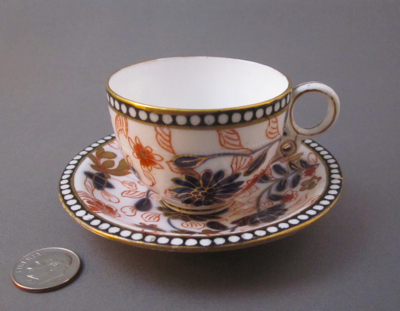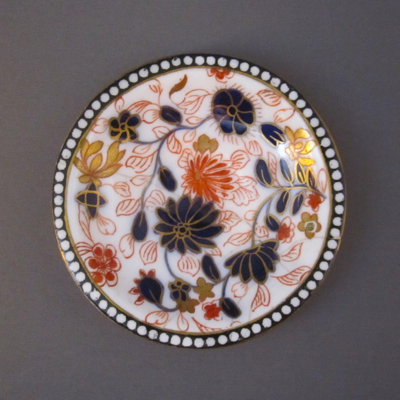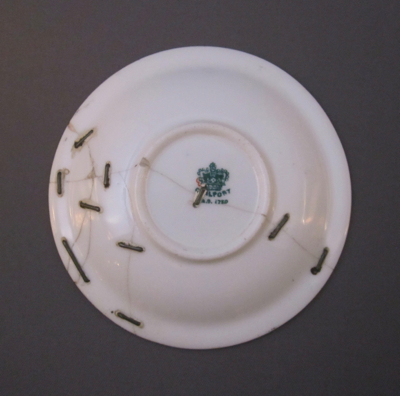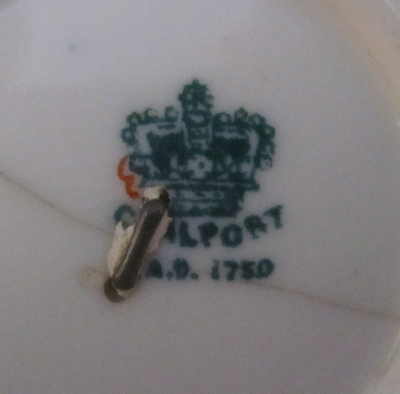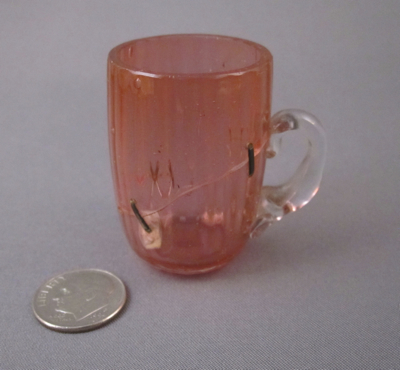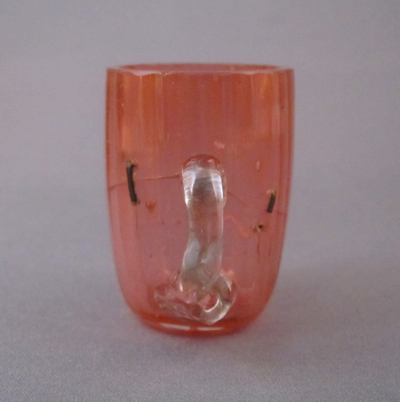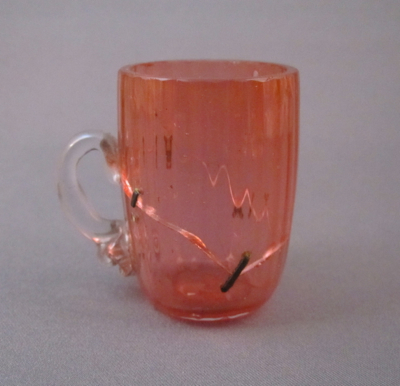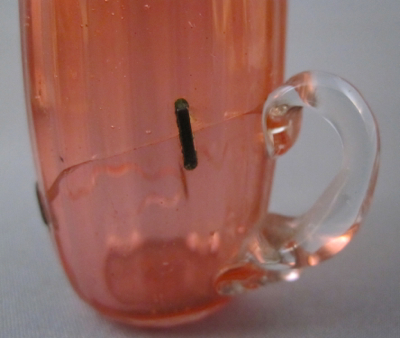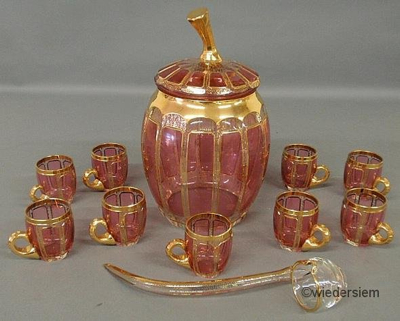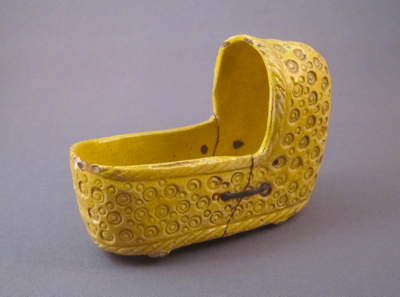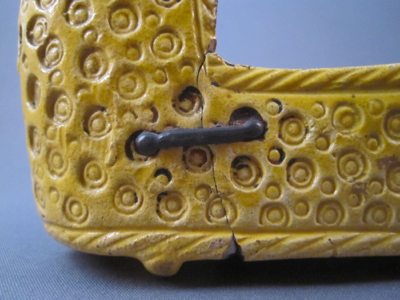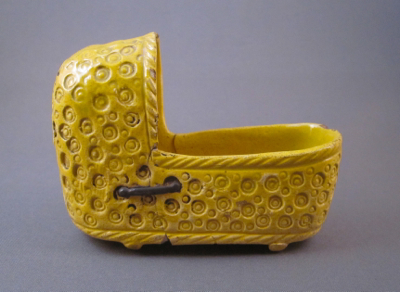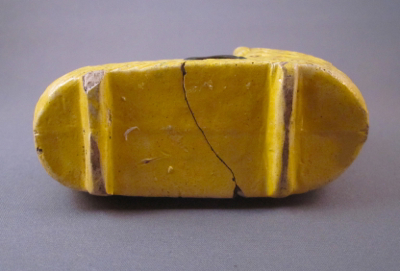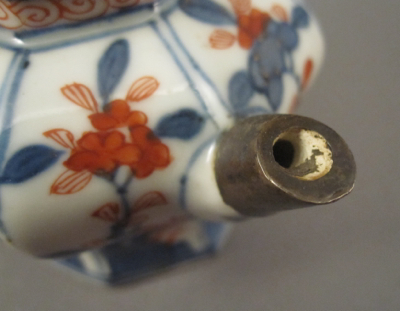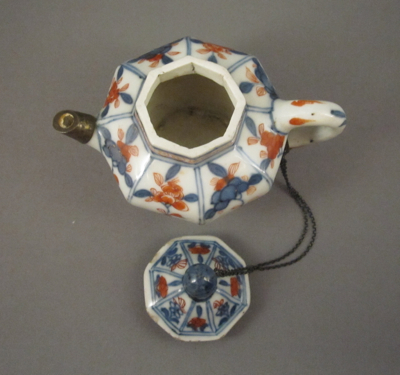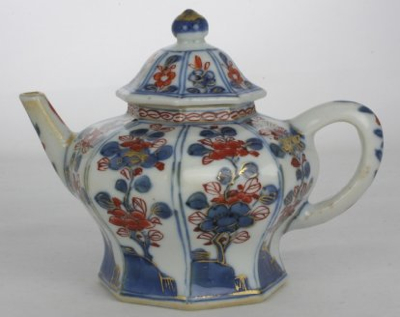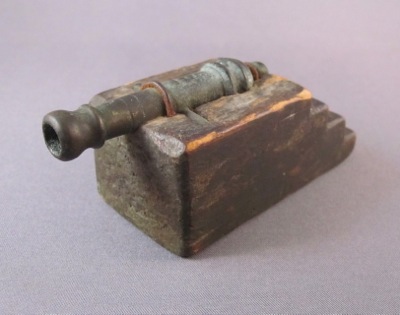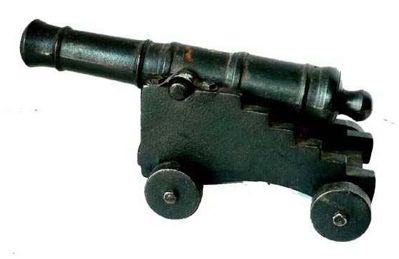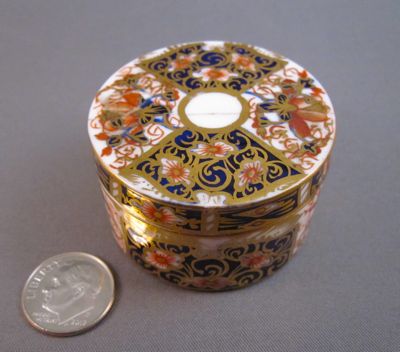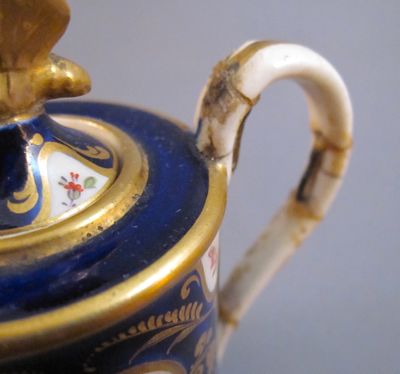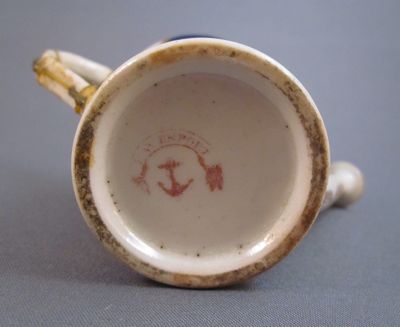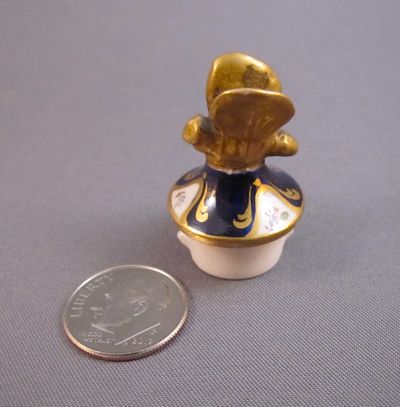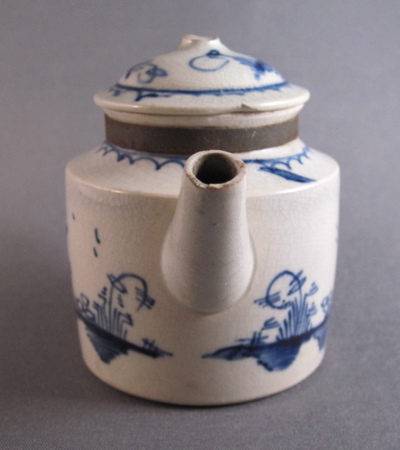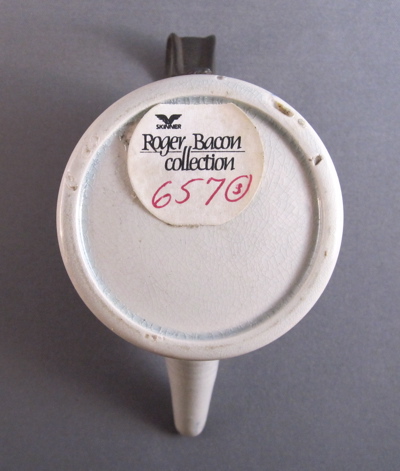This minute bone china porcelain cup & saucer duo, made at the turn of the 20th century at the Coalport factory in Shropshire, England, has some of the smallest metal staple repairs I have ever seen. It has printed Japanese style floral decoration in the Japanese Imari palette, consisting of iron red, cobalt blue and gilt enamels. Both pieces are marked with a green stamp on the underside, dating them to 1890-1920. The saucer measures 3-1/4″ in diameter and the cup stands nearly 1-1/2″ high with an opening of 2″.
After the dainty saucer fell to the floor, breaking into six small fragments, it was brought to a china mender who pieced the puzzle back together. Using 10 custom made metal staples, the smallest being a mere 1/4″ long, the saucer was once again able to function as a support to the tiny cup it carried. Imagine the nimble fingers capable of creating such fine work!
